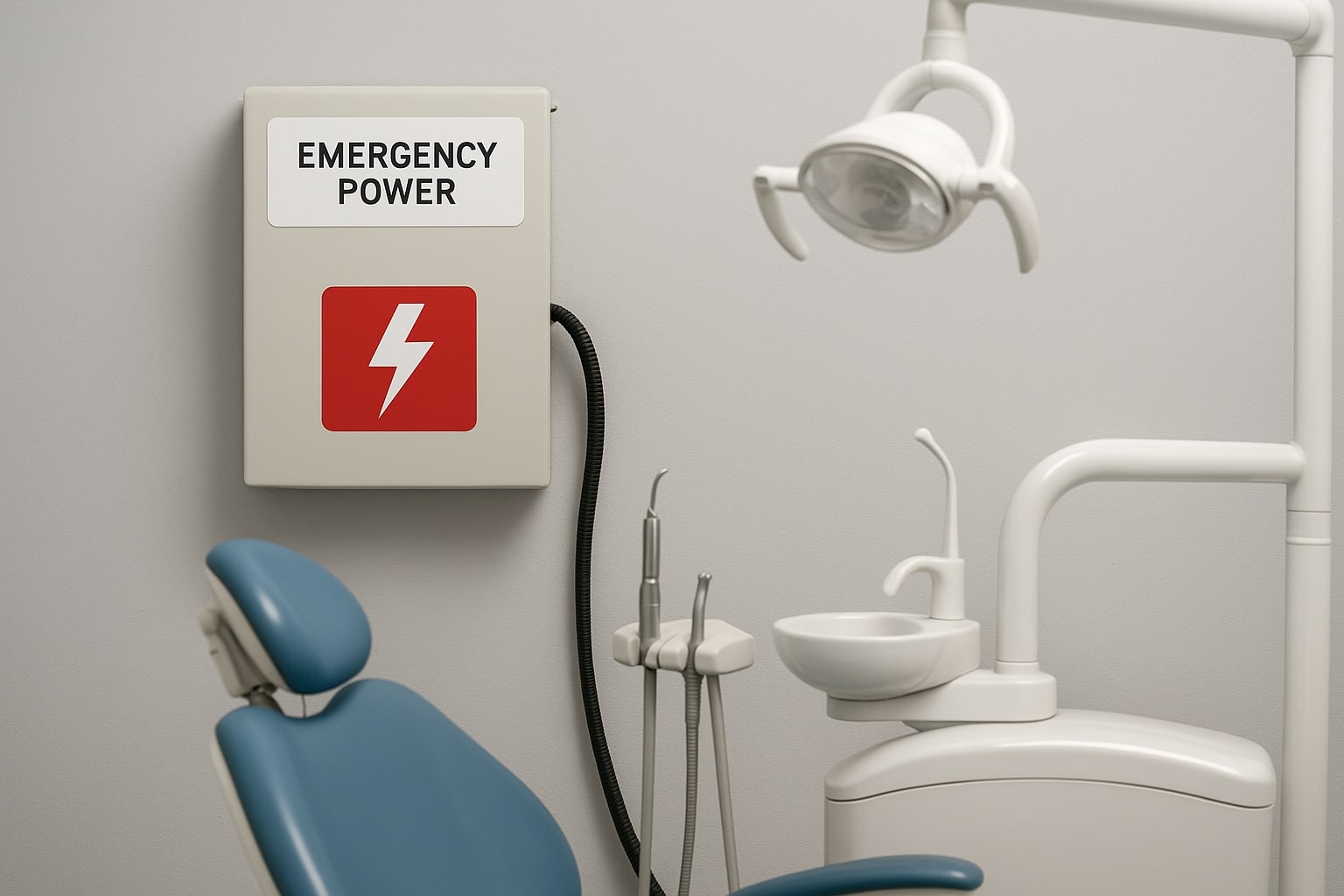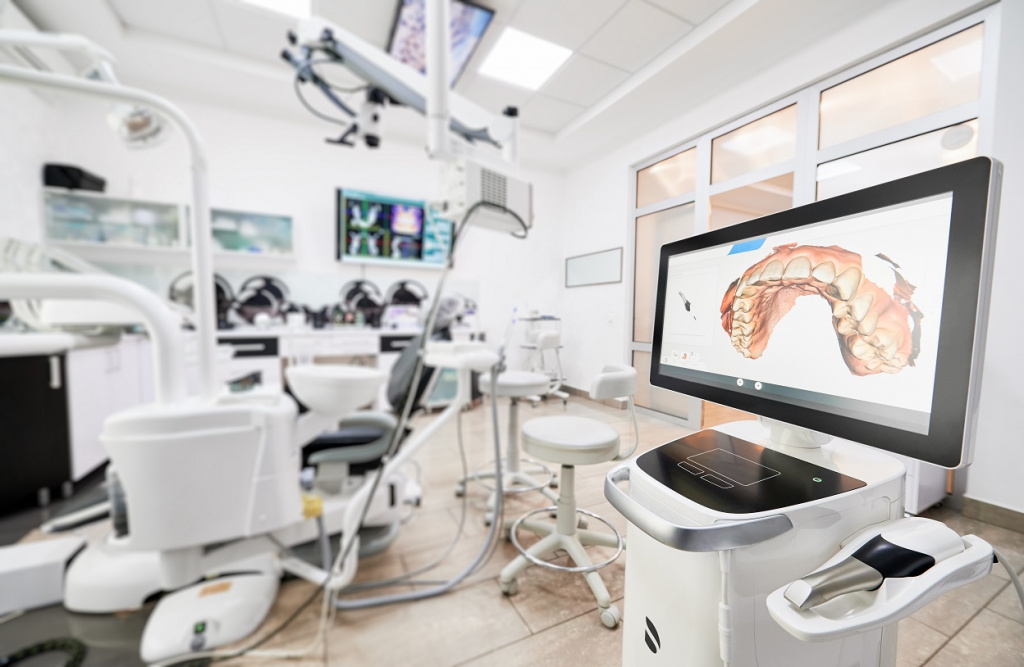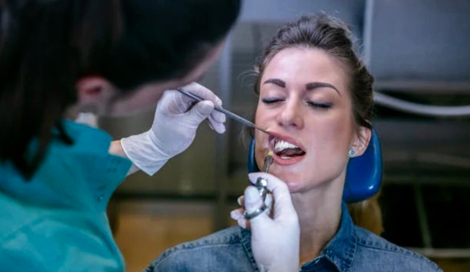
What is a Biopsy?
A biopsy is one of the medical diagnostic methods. This procedure involves taking a sample from the targeted tissue. The obtained specimen is sent to pathology laboratories for microscopic examination. Biopsies can be performed on all body tissues, including hard and soft tissues of the oral cavity, which may present with benign or malignant lesions. Diagnosing oral cavity lesions often requires histopathological evaluation of the affected tissue through biopsy.
Oral tissue signs that may require a biopsy include:
- Any radiolucent bone lesion (usually periapical translucency) that does not respond to root canal treatment.
- Inflammatory changes of unknown origin that persist for a long time.
- Radiolucent or radiopaque bone lesions that are enlarging and displacing normal anatomy (bone expansion, displacement, or resorption of teeth).
Biopsy Procedures
The principles and methods of performing soft and hard tissue biopsies follow standard surgical protocols. For soft tissue surgery, local anesthesia is preferred, as injecting directly into the lesion from which the biopsy sample is taken may alter its structure and sometimes complicate diagnosis. Stabilizing the tissue is essential in order to make precise surgical incisions. Hemostasis is important to avoid the need for high-powered suction. It is recommended to use low-powered suction, with the tip wrapped in gauze, to prevent the biopsy specimen from being accidentally aspirated.

Post-Biopsy Care for the Oral Cavity
Biopsy of the soft or hard tissues of the mouth, which involves removing a small piece of tissue for examination, makes it very important to follow post-operative care instructions to aid healing and reduce the risk of complications.
Please pay attention to the following points after biopsy surgery:
- Due to the prolonged effect of local anesthesia (usually 3-4 hours) and numbness of the soft tissues around the teeth, be careful not to bite your lips, cheeks, or tongue.
- For up to 24 hours after surgery, saliva may appear tinged with blood, which is normal. If you experience active bleeding, please contact us.
- Controlling bleeding: If you notice bleeding at the biopsy site, place the sterile gauze provided on the wound inside the mouth for 15-20 minutes to help reduce bleeding, then remove it.
- For up to 72 hours, you may feel a burning sensation at the surgical site. Please take the prescribed medications, or if none are prescribed, use painkillers (except aspirin and its compounds) in case of pain.
- Applying ice packs to reduce swelling: Use an external ice compress until the end of the day after surgery. Place the ice pack on the face for 5 minutes, then remove it and rest for 5 minutes before repeating.

- Prohibited: Avoid repeatedly spitting or suctioning saliva during the first 24 hours to prevent increased bleeding.
- No smoking or alcohol: Refrain from smoking, pipes, or hookah for 72 hours, as this may dislodge the blood clot. Also, avoid alcoholic beverages as they can delay wound healing and increase related risks.
- No straws: Using a straw creates suction, which can dislodge the blood clot and cause a dry socket.
- Rest: Avoid heavy physical activities or any activities that may increase bleeding during the first 24 hours.
- Diet: During the first 24 hours after surgery, consume soft foods and lukewarm liquids without using a straw. Afterwards, you may eat normal foods on the unaffected side, but avoid hard or chewy foods in the biopsy area for up to two weeks. Also, remember to drink plenty of fluids.
- Oral hygiene after biopsy: Brushing is not recommended during the first 24 hours after biopsy. However, from the night after the biopsy, you may gently brush other areas of your mouth, avoiding the wound, and use dental floss. Avoid irritating the biopsy area. Also, avoid rinsing your mouth on the day of the biopsy; from the second day onward, gently rinse your mouth with saline solution or diluted salt water (if you have no high blood pressure) after each meal.
- Bleeding: Some blood in saliva for a few days after biopsy is normal. The night after surgery, keep your head slightly elevated on the pillow and place a towel under your head as minor bleeding is normal. However, if you notice abnormal bleeding from the biopsy site, contact us.
- Swelling: Swelling and pain are expected after a biopsy and are not necessarily signs of infection. This swelling may be accompanied by bruising, which usually resolves within 7-10 days. To speed up the absorption of bruising and swelling, alternating warm compresses for 5 minutes can be applied. If swelling, pain, or bad odor persists or worsens, contact us.
- Fever and slight increase in body temperature after biopsy is normal, especially if oral hygiene is not optimal. Contact us in case of high fever.
- Post-biopsy complications: If you experience any signs of infection, such as excessive swelling, severe pain, continuous bleeding, fever, or difficulty opening your mouth, contact us.
- Stitch removal: Some stitches may not be absorbable. In this case, visit your dentist 10-14 days after surgery to remove the stitches and check the healing of the biopsy site.
- Reminder: Healing time after a biopsy varies among individuals and may take several days. Maintaining oral hygiene and avoiding touching the surgical area with fingers or tongue accelerates wound healing.
- If you have not informed your surgeon before the biopsy about any general health conditions such as heart problems, jaundice, high blood pressure, hyperthyroidism, or aspirin use, do so at the earliest opportunity.
- Follow-up: Attend all post-treatment appointments with your dentist to ensure proper healing of the biopsy site.
By following these post-operative care instructions, you can support the healing process and achieve the best possible outcome from your dental biopsy.






